the caboose that never was
1234567


















1234567
Re: C&S caboose undercarriage timeline.
|
This post was updated on .
I have brought up the question of when the C&S cabooses were fitted with the modern independently sprung, 9 ft wheelbase undercarriage, and whether or not this was done at the same time as the body rebuilds with end cupola additions. The body rebuilds followed the design set down in the drawing of June 22, 1908, but were carried out over following years to at least 1912. I suggested that the undercarriage replacement might have been done a number of years before that.
I re-read Derrell Poole's articles in Outdoor Railroader, and there it was, in the third article in the Jan. 1996 issue. Derrell stated there that as of 1903 the four wheel cabooses' suspension and running gear were not compatible with automatic airbrakes. That suspension "...included equalizer bars and cross braces making it very difficult to adapt the brakes. The answer was to upgrade the undercarriage somewhere between 1903 and 1907 so crews could install and maintain the modern brakes." Derrell did not include his references for these dates, and I have no idea whether or not any specific dates for this work are known for the individual cars. I apologize for forgetting that I had read this in his article, I'm sure it put the idea in my head to suggest the question in my earlier posts. If we take this timeline as fact, then what I suggested as possible for 308/1006 in the 1911 folio, namely that it had the modern 9 ft undercarriage but still had four windows and no cupola as shown there, makes complete sense. There would have been at least some years before 1911 when this was true, possibly as early as 1903. This timeline would also have applied to other cars, as I suggested. How then does this relate to the 313 Blackhawk (1910) photo with the strange short undercarriage, but with modern brakes? I don't know, but I think we have other doubts about our understanding of this car as well, for instance that it had square corners that the 80/1518 it was supposed to be did not have. Maybe this car with its undercarriage structure was a unique anomaly, possibly not even an original DSP&P built car. Whatever it was, its short wheelbase does not appear to have had the equalized undercarriage structure and was obviously compatible with Westinghouse brakes. It was scrapped in January, 1915, and we can imagine that during that period when cabooses were in surplus, one that still had a short wheelbase would have been first on the chopping block. Where, then, does this leave us about all the other cars: short wheelbase or not, and of what design? As to wheelbase, I'm working carefully on each of the early caboose photos that Jim, Chris and I have posted. I need to spend the time to do the best job I can with measurements. Not to keep you in suspense, I am close to concluding that none of them, with one exception, a nearly end-on photo that is useless for measurement, is compatible with a wheelbase over about 7 1/2 feet in the most uncertain cases. They cannot be 9 ft wheelbase cars, or anything close to that long. I'll post the details as soon as I am satisfied I've considered all possibilities. As to the design of the original undercarriages, whatever their wheelbase, I have no hard information. At this point I would not argue that they looked like 313 at Blackhawk. They could have, but I don't know. I did a search of other bobber undercarriages, and the equalized design was indeed quite common on other roads, standard gauge cars were built with this suspension at least from 1883 all the way up to 1919. (By the way, Doug H.'s photo of what I have been calling the "mystery caboose" has been identified by Mal Ferrell and others as a Utah Northern car, probably standard gauge.) Caboose 306 with the 9 ft version could be taken as an undercarriage experiment that either was not successful at keeping the car on the tracks for long, or that in any case couldn't be conveniently adapted to automatic air brakes, as Derrell wrote. Could 313 have been an early airbrake experiment, installing the brakes on the short undercarriage, that was also not satisfactory? That's what I have for now, please comment/correct, John
John Greenly
Lansing, NY |
Re: C&S caboose undercarriage timeline.
|
There are several copies of this WH Jackson picture in the DPL, the enlargement is from the best print but the link is to an inferior copy, sorry I didn't save the correct link and haven't the time to search this for you today.
http://digital.denverlibrary.org/cdm/fullbrowser/collection/p15330coll22/id/55896/rv/singleitem/rec/65 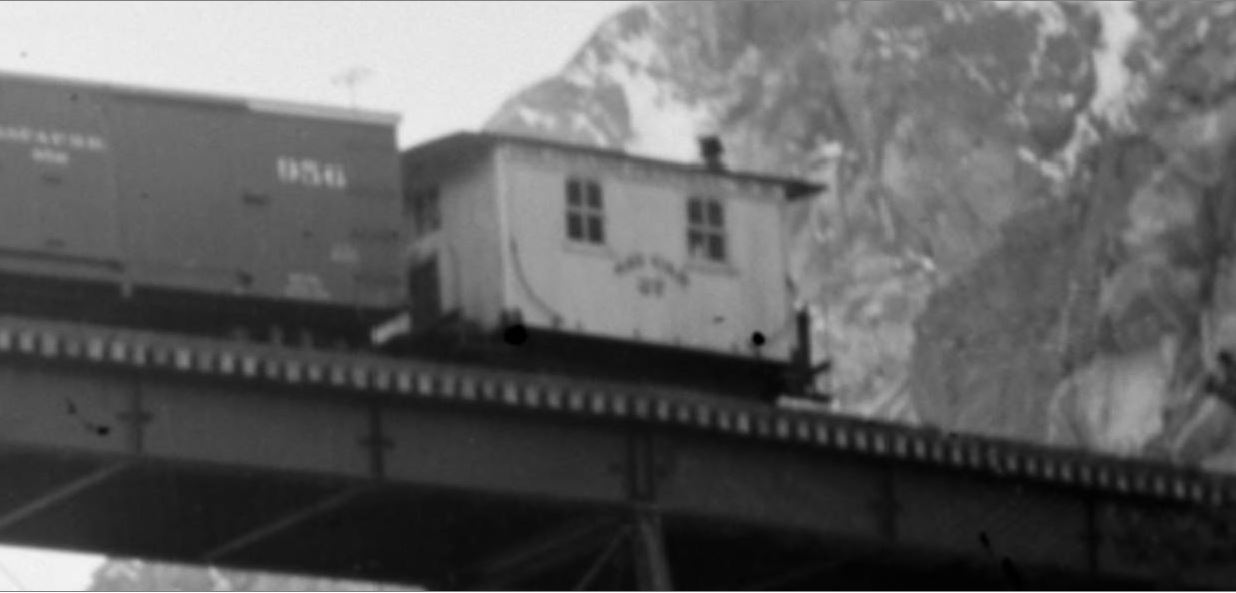 As for the Uintah cars, one appeared to have all the(model railroad) characteristics of a proper truck. DPL call # CHS.X9364 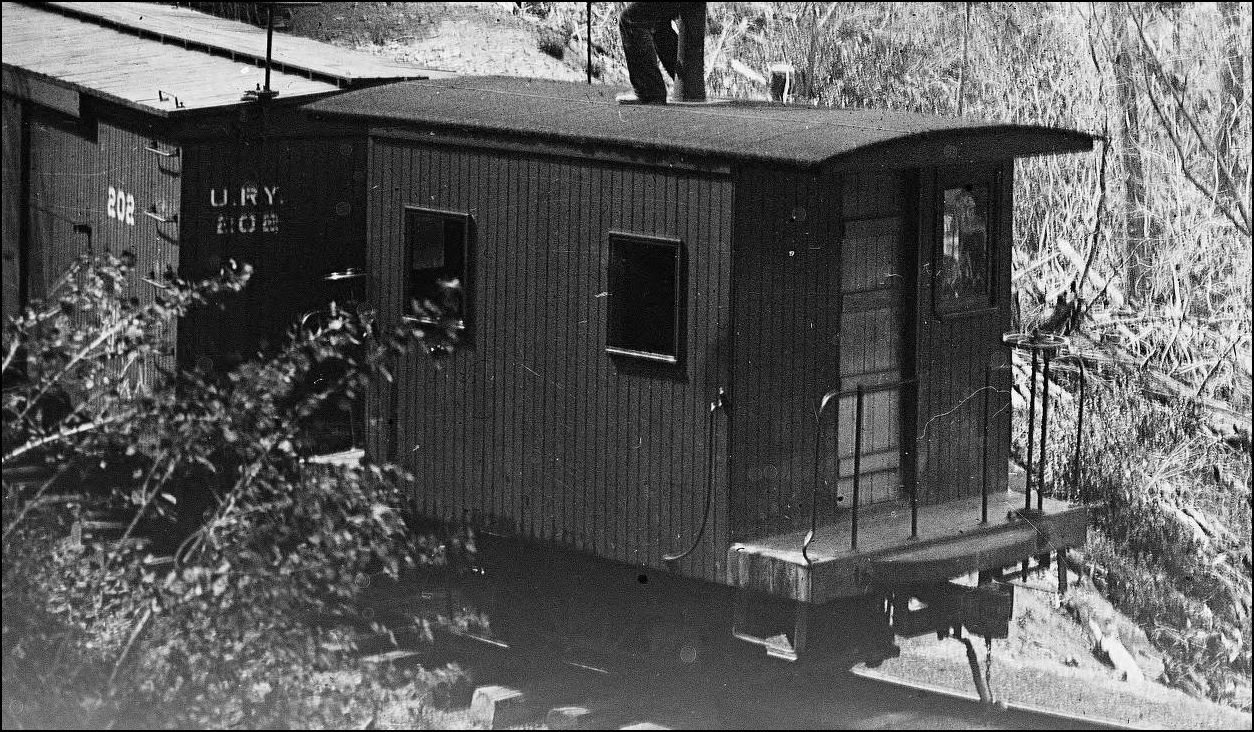 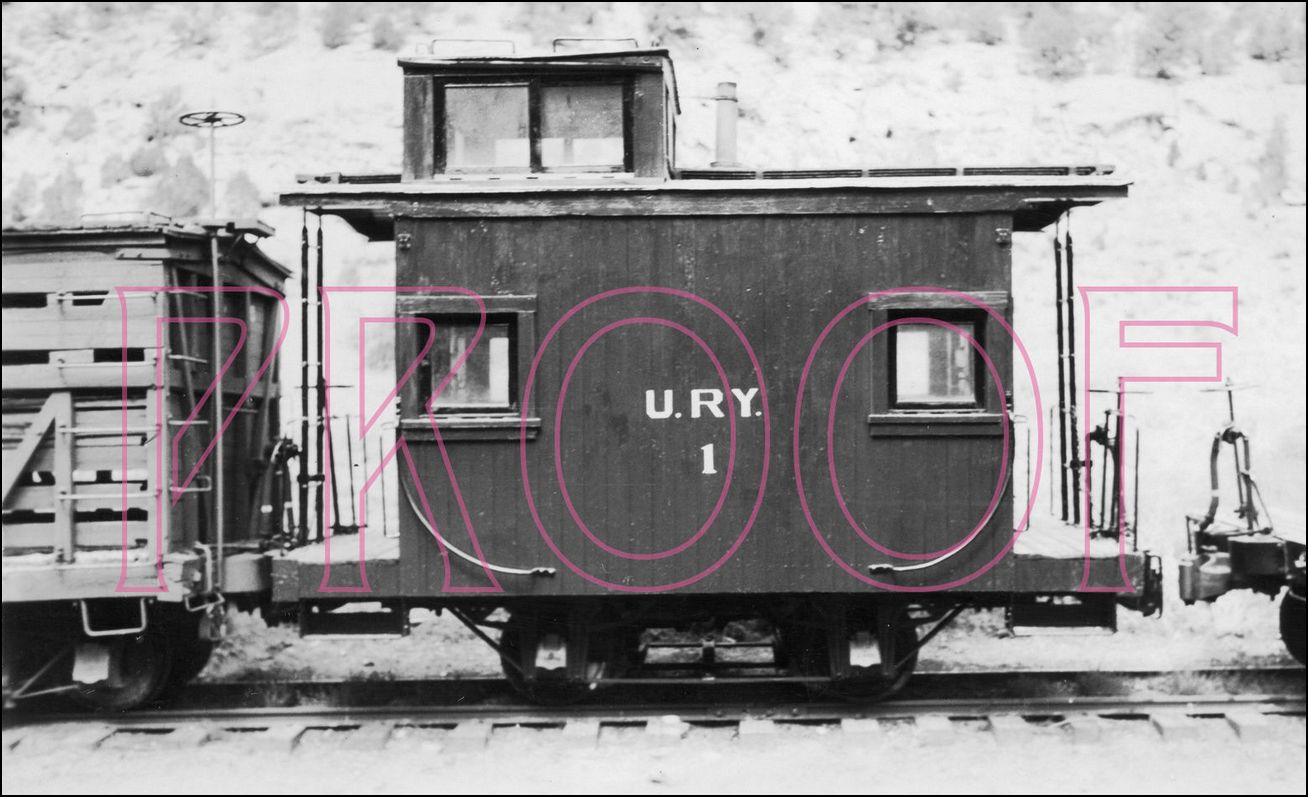
UpSideDownC
in New Zealand |
Re: More C&S caboose under frame stuff--other narrow gauge bobbers.
|
In reply to this post by Jim Courtney
In the midst of this very interesting and fast-moving thread, I badly missed Jim's cue about the D&RG 4-wheelers -- sorry, Jim!
And I don't know how much there is to learn from my Sn3 conversion of an OMI C&S model into its very distant D&RG cousin, especially since mine was distinctly in the "good enough" rather than contest quality category. The two cars shared wheelbase (and of course gauge), but no other dimensions as far as I could tell. However, the OMI frame provided a nice-running chassis with good low center of gravity. I stripped the C&S model down to its bare frame and running gear, stuck on a few pieces of brass and styrene as a facsimile of the center pivot, buggy-type suspension system, and built a new body with frame extensions to sit on top of it. I ended up with this: 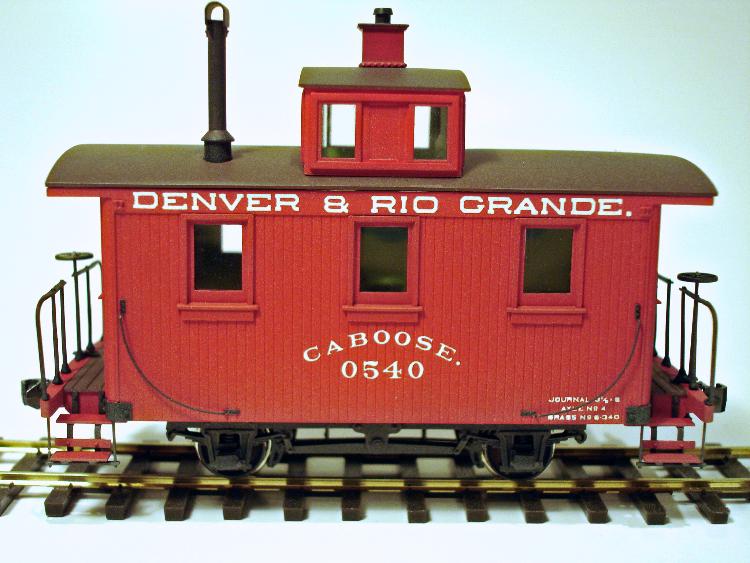 When built, the D&RG 4-wheel cabooses had hand brakes only. They were mostly converted to 8-wheel (type 4) cabooses or scrapped by 1903 (and all were apparently gone by 1914), which leads me to believe that their frame and suspension system were too hard to adapt to automatic air -- similar to what's been postulated here for the C&S "intermediate" style. |
Re: C&S caboose undercarriage timeline.
|
In reply to this post by John Greenly
Morning John,
I've stepped back from this topic for a few days to collected my thoughts about the C&S caboose underframes, wheel base, etc. Frankly, I'm not sure what I believe any more, the entire topic seems a mess to me, every bit of surviving evidence (not much actually) seems full of contradictions. As to the statement in Derrel's Outdoor Railroader article: "...included equalizer bars and cross braces making it very difficult to adapt the brakes. The answer was to upgrade the undercarriage somewhere between 1903 and 1907 so crews could install and maintain the modern brakes." I'd remind you, the article was published over 20 years ago. In the "Eight Wheel Caboose . . . " thread of 2015, Derrel shared a lot more information, from a lot of document research that he had done over the interim 2 decades. The thoughts expressed by Derrel, Ron Rudnick, Mal Ferrell and others are not an easy read. They are a series of thoughts expressed extemporaneously, in response to someones prior thought. The information therein isn't organized as a summary in a logical order. I'm working in the hospital today and Friday without access to my own photo files, books and documents. I'm trying to go though the "Eight Wheel Caboose . . ." thread and extract and organize pertinent thoughts. I'll try to post them by the weekend. Preview: Derrell quotes the June 1898 DL&G Annual Report: "12 cabooses with Westinghouse brakes and Selden couplers." So, all or most of the DL&G cabooses to be inherited by the C&S, may well have had air brakes mounted to what-ever-the heck was the standard underframe in the mid to late 1890s, long before the 1908-12 rebuilding program.
Jim Courtney
Poulsbo, WA |
Re: More C&S caboose under frame stuff--other narrow gauge bobbers.
|
In reply to this post by Geoff Hamway
Thanks for posting the photo, Geoff. Great model. It is certainly pertinent here--an 4-wheel Colorado narrow gauge bobber is a 4-wheel bobber, whether it be C&S or D&RG.
I think your model conveys how the "intermediate" or "equalized" underframe might have looked, as on the photo of C&S 306. I'm not sure why this underframe configuration would cause problems with the application of air brakes. I've been fiddling with my S scale 3-D printed Shapeways "equalized" side frame, compared to the stock Overland "modern" undercarriage. The sill depth is the same, and the outside mounted cylinder and brake lever seem to fit right in place.
Jim Courtney
Poulsbo, WA |
Re: C&S caboose undercarriage timeline.
|
In reply to this post by Chris Walker
Chris, thanks for the "up-the-kilt" photo of one of the early C.C. cabooses. I doesn't yield much detail about the undercarriage though, does it?
If you can find the DPL link to this "best-quality" image of this Jackson photo, I'd appreciate it.
Jim Courtney
Poulsbo, WA |
Re: C&S caboose undercarriage timeline.
|
This post was updated on .
Still checking over my geometry for the photo analysis. I think the late '90's Como caboose in the photo Jim posted on p.2 of this thread is the poster child for the short wheelbase caboose. Here it is again:
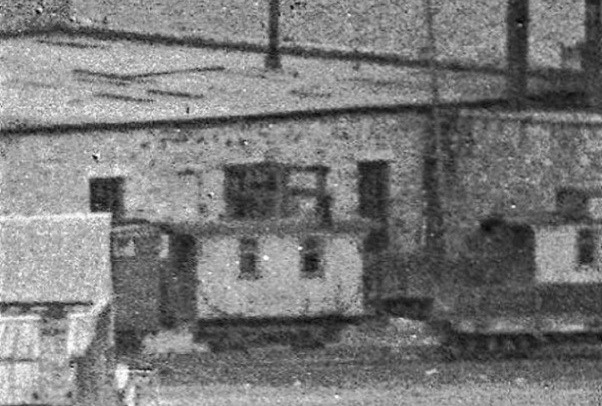 If anyone can supply a clearer version, it would be a huge contribution! The more I look at it, the more I can't help thinking that the car looks like a body plopped down onto a passenger car truck. The heavy beam that carries the pedestals/journals (whatever they are) doesn't attach to the end beams of the car, is way below the bottom of the car side and is at about the right height to be the beam of a passenger truck. Here's an anguished plea to all you early passenger car experts- did any passenger cars have truck wheelbases as long as 6' 3" ???? This would be pre-1880 or so, before the cabooses were built and before the familiar leaf/coil sprung modern type of equalized passenger truck came into use. Could the UP have built these caboose bodies and put them on some old, obsolete passenger trucks? John BTW, Geoff, that's a very cool D&RG bobber, thanks for posting!
John Greenly
Lansing, NY |
Re: C&S caboose undercarriage timeline.
|
Guys,
Great discussion, keep it up. I wish I had something concrete to add, but I don't. So instead, here is another Como Caboose picture. In addition to the ones on the right, there is one on the left. So how many Waycars came to the C&S with a cupola already in place? 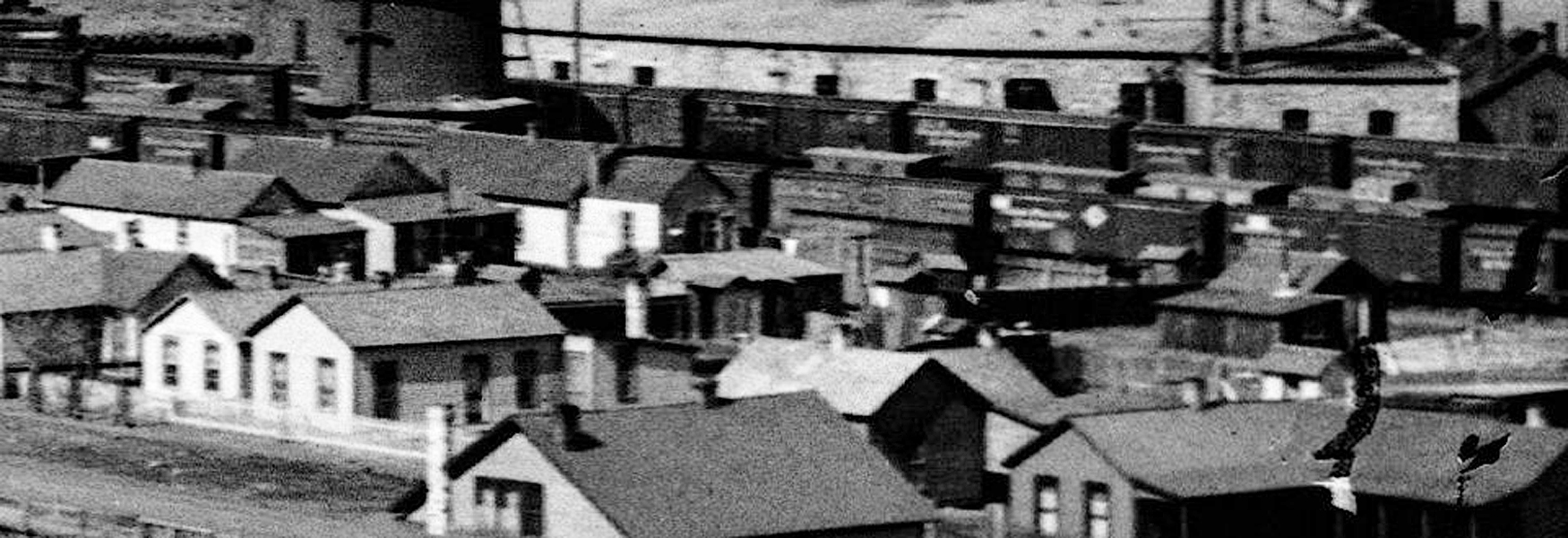
Doug Heitkamp
Centennial, CO |
Re: C&S caboose undercarriage timeline.
|
In reply to this post by John Greenly
John,
I believe that Todd Hackett posted the original Como photo. Not sure if any better resolution is possible. BTW, did you notice the four little bolt heads at the bottom of the sides of the 1884 Colorado Central caboose, that Chris posted? They also seem to be present on the Braddocks caboose of 1901. They appear to similar to the Blackhawk photo of 313. So what if the weird underframe under 313 is the original short wheel base carriage?
Jim Courtney
Poulsbo, WA |
Re: C&S caboose undercarriage timeline.
Jim, yes, I did notice those bolts- I believe there might be six: two in the middle and two close together near each end, if you look closely in the shadow of the side grabiron in the 313 photo. I think the CC 1884 photo (thanks, Chris!) shows that too- the arced grabiron doesn't extend as far over on the car side, and one bolt head is right underneath its end? I guess I have been hoping against hope that the 313 undercarriage was unique, but as far as I can tell at the moment it could be the original that other cars had too. John oh, yes- Doug, I think that's part of the photo that Derrell Poole showed in the eight-wheel caboose thread. Lots of cupolas already then!! At this point it would be a relief to talk cupolas, but I'm keeping my eyes on the undercarriages, as long as I can stand it!!
John Greenly
Lansing, NY |
http://digital.denverlibrary.org/cdm/fullbrowser/collection/p15330coll22/id/76301/rv/singleitem/rec/17 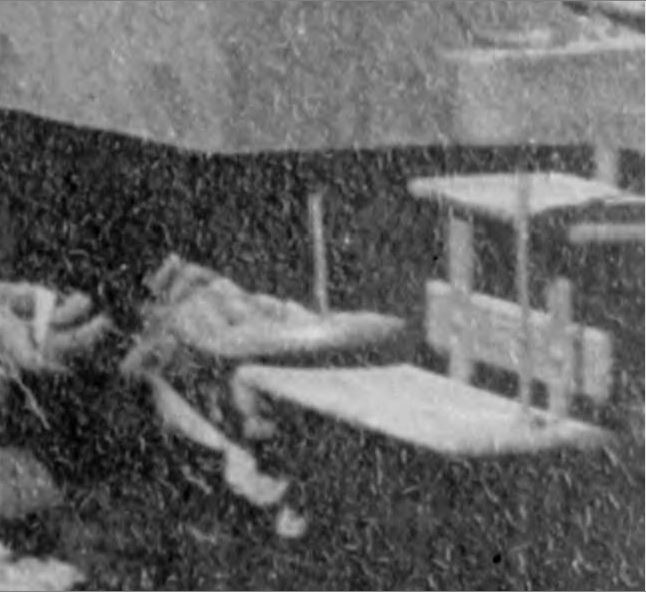 I must say that since I've never really got into studying the variances of the Bobbers but must note the fragile steps were present on the CC, DSP&P, and D&RG cars at some time or another and really have some appeal. To my eye, the sturdier replacement Steps were somewhat visually disturbing in shape on the C&S compared with those refitted to the D&RG. Oddly enough, the NZR had steps of similar light construction, that when boarded, had some springiness and gave the impression/feeling that they weren't as substantial as they could be. 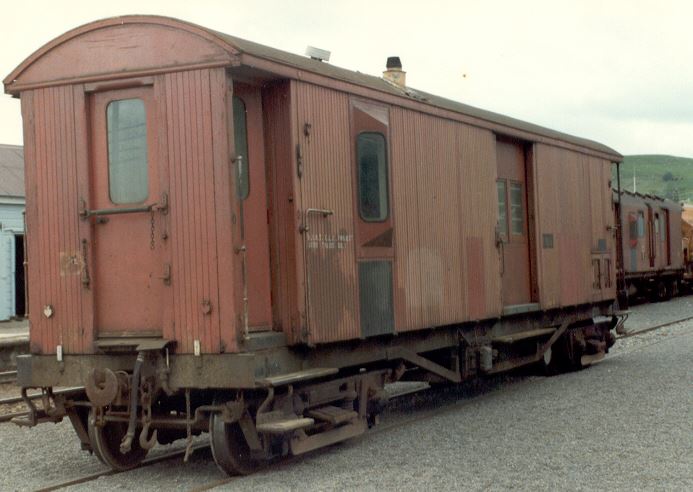
UpSideDownC
in New Zealand |
Re: C&S caboose undercarriage timeline.
|
In reply to this post by Jim Courtney
Jim,
the link as you requested. http://digital.denverlibrary.org/cdm/fullbrowser/collection/p15330coll21/id/9854/rv/singleitem note there is yet another example of the rare hyphenated DS~P&P lettering present in the picture, this time on a Boxcar. 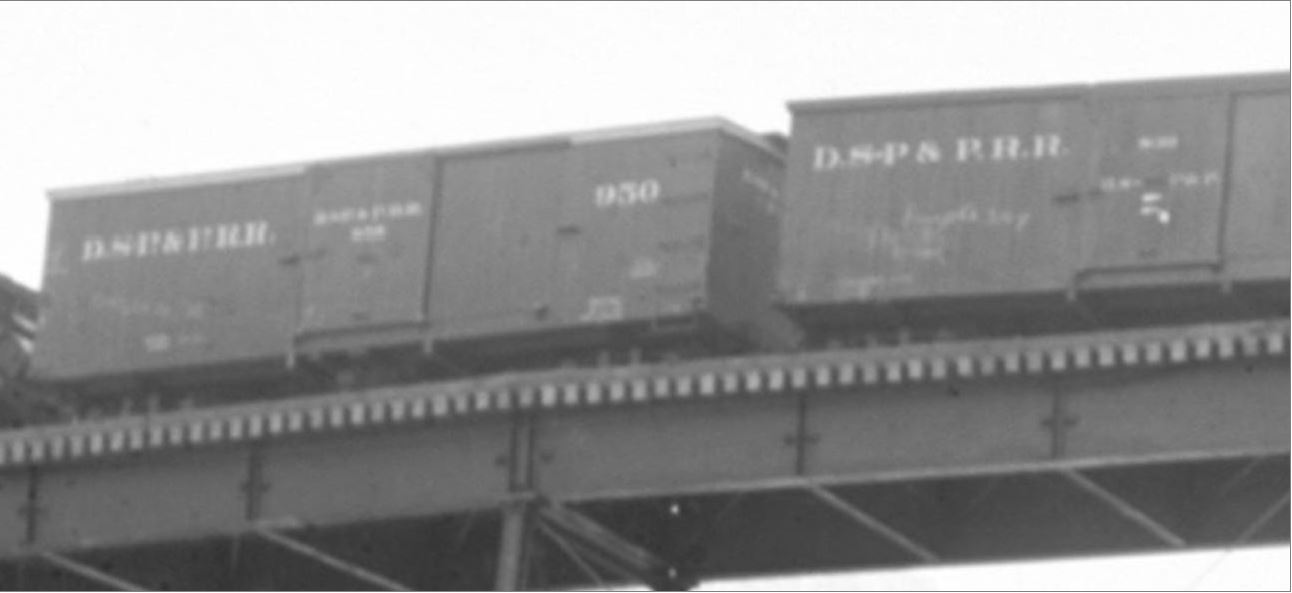
UpSideDownC
in New Zealand |
C&S caboose undercarriage yet again
|
This post was updated on .
In reply to this post by Chris Walker
Well, okay. I've taken a long break from the caboose undercarriage woes, but came back to it in the last couple of weeks, and I have a few things to add: a couple of scant facts, a review of my earlier measurements, and, of course, some new speculation.
First of all, after returning to this and checking everything over again, I believe I still agree with my conclusions about the photos we have on this thread, with one exception. The caboose on the bridge in the snowy Georgetown photo cannot be an eight-wheeler, there just isn't anywhere near enough length under there unless the trucks have internal brake shoes and about 3' wheelbase. Just compare the length under the caboose with a truck on the boxcars ahead of it and you can see the problem. I don't know what's under there, but I'll bet it's four wheels on a long wheelbase (a CC car) and maybe some other stuff hung down there. Otherwise, I believe all the photos are, as I remarked at the time, either impossible to measure or consistent with the short wheelbase, except for the CC caboose at Beaver Brook, which probably has a long wheelbase. (short = 6'3" or so, long = 9') Now here's a new piece of factual information, for me at least. Crain's railway pages have a set of Maxwell drawings, including a pair of 309/1007: http://www.ross-crain.com/rr_dsp6b-maxwell.htm I wouldn't reproduce them here in respect of Maxwell's possible copyright, but they certainly have been posted there for a long time, so here they are for convenience-- I will delete them if you think I shouldn't reproduce them here. 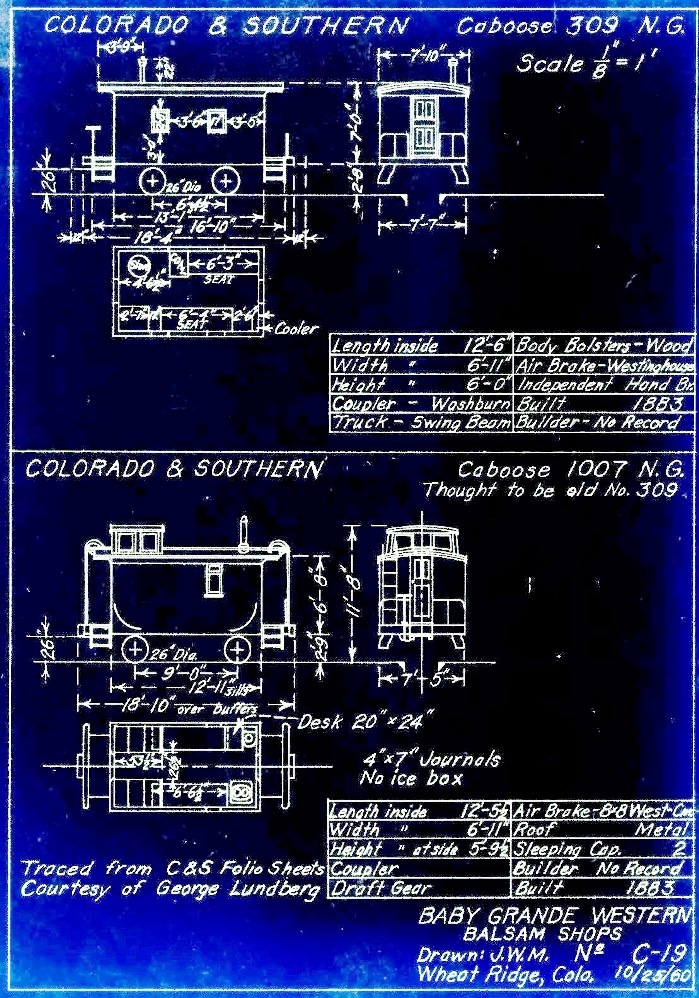 So, here is a second case to go along with the folio of 304/1003 that Jim put up here. As you see, the wheelbase of 309 is shown as 6' 4 1/2". Our 304 folio 6' 3" wheelbase now has a very near-twin. To me especially fascinating is the inscription, identical on both 309 and 304: Truck: swing beam, bolster: wood. What can this possibly mean??? Now I'm off into speculation again. I'm inclining more strongly, lacking any contemporary (photos or drawings) information to the contrary, to the idea that this short wheelbase undercarriage, whatever it was, was the original on most or all of the DSP&P waycars. And I'm more and more inclined to the idea that it was in fact a "truck" of some sort. I've been puzzling for so long now over the 313 Blackhawk photo, here it is with enhanced contrast as best I can make it: 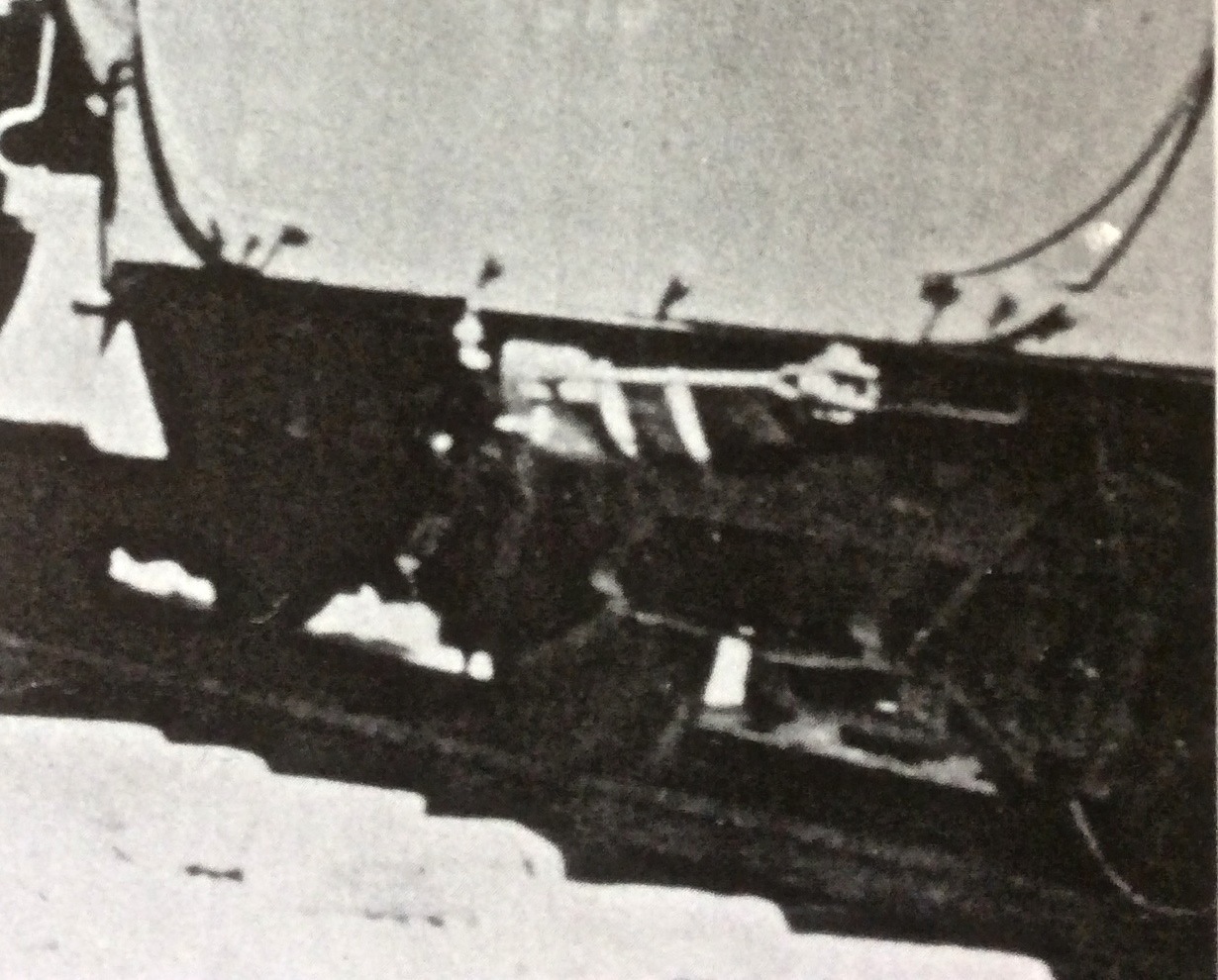 Chris's post on this thread of a Uintah caboose clearly shows that it sat, at least for some time, on a single swing beam or archbar freight truck. This truck did not have individually sprung journals in pedestals, but like a swing beam truck, had its springing in the bolster. What a weird thing to use singly under a car! It's very easy to imagine how the name "bobber" came, if you think for a moment about the freedom to pitch in the fore-and-aft direction that this suspension would allow. A fine idea when there are two of them at the ends of a car, a crazy idea for a single undercarriage. From the 313 photo, (and the Como photo as well, small and grainy as it is), it is certain that the beam that carries the journals is well below the bottom of the car side and much lower than the deep sill that carries the pedestals on the modern 9' undercarriage. Here's the Como photo again, for reference: 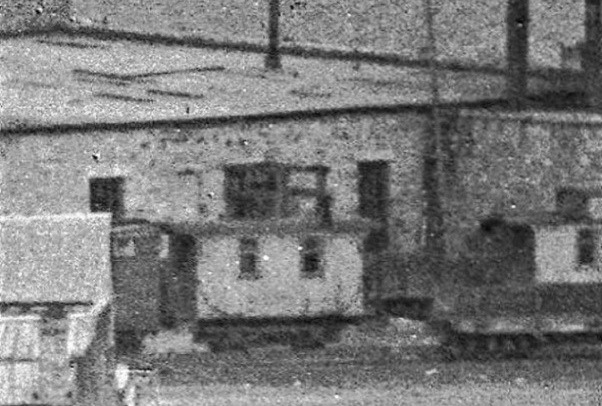 I don't know whether there is enough vertical space between the journals and this low beam for springs above the journals on these cars. I doubt it. Thus the "truck" may be either rigid, or else there is some sort of springing between the beam and the car body. The written description on the folio sheets is "swing beam" truck. Maybe, crazy as it seems, that's actually what it is. I've been studying the early history of trucks, more on that later perhaps, and I'd dearly love to have some expert on early wood-beam trucks out there weigh in on this. Here's an example of a passenger truck on the very first Pullman car (1858, standard gauge):  This car does have individual journal springs (coil or possibly rubber), but also has a swing-beam bolster. These bolsters commonly used transverse leaf springs, which ride better than coils because the friction between the flexing leaves does a better job of damping out bouncing. It could be that the 313 photo shows leaf spring mounting brackets: the bright objects that project outward just below the beam that the skinny reinforcing rods are attached to, and are about 2 1/2 feet apart. Then the bolster of course doesn't have rotational mounting and is fixed to the sills, while the longitudinal beam carrying the journals is part of the unsprung weight. A second possibility also involves leaf springs and I like it maybe better, though it occurred to me more recently and I haven't had as long to develop doubt. It is that those projections are indeed leaf spring mounts, but the springs are longitudinal, underslung and passing beneath the pedestals with a link connecting up to the journals. Thus the journals would be individually sprung and the beam would be fixed to the car body, a very sensible arrangement, if four wheels on such a short wheelbase are ever sensible. I found this underslung leaf-sprung journal arrangement described in an 1892 book on truck evolution that I am reading, I will post a diagram later. This, however, would not be described as a "swing beam" truck, as far as I can make out at present, so it leaves a mystery of the description in the folios. You might also ask, if it was done this way, then why not just make the wheelbase longer in the first place? A possible explanation is that trucks underwent a gradual evolution from short to longer wheelbase through most of the nineteenth century, gradually overcoming a belief that long wheelbase would lead to excessive wear because of the increased misalignment of the wheel and rail on curves. In the early 1880's wheelbases longer than 6' were rare, and on the narrow gauge, only the Pullman cars had wheelbases longer than 5', I believe. This is actually I believe quite a strong argument against a 9' wheelbase having been applied to these waycars in the early 1880's. Other points: the deeper intermediate sill that carries the pedestals on the modern undercarriage is visible below the end sill. In none of the photos can I find evidence of this deep sill. I believe it must have been added when the cars were rebuilt, to carry the modern undercarriage pedestals. The brake rigging definitely passes from the cylinder above the truck beam on the short undercarriage, barely beneath the car side and probably too high to clear a deeper sill. So far I can't convince myself whether the truck had outside or inside brakes. The 313 photo seems to show none on the inside of the lefthand wheel, and a couple of the other photos seem to me to hint at outside brake beams, but I'm not sure. I'm beginning to think in a feverish way of building a model with the short wheelbase, all the details will be totally speculative of course, but it would be fun to see what it looks like with the wheels so close together, and to find out whether it would stay on the rails at all. And it would serve a genuine purpose. I could use it, along with the long-wheelbase version, to compare in perspective with all the photographs, to check yet again my conclusions, in the most direct possible way. So, I've clearly gone way off the deep end, but there's some strange comfort in sharing my ravings with you all. ???? John
John Greenly
Lansing, NY |
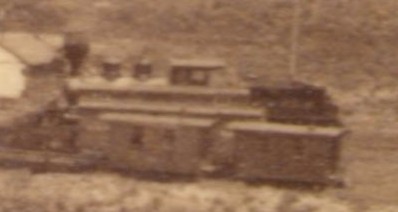 Not sure if this help, but some more. |
Re: C&S caboose undercarriage yet again
|
This post was updated on .
In reply to this post by John Greenly
Well, well, John,
It looks like you and I have been doing the same thing during our 3 month hiatus of discussion -- trying to make sense of the early South Park / C&S waycar underframes. I hope you did not think me rude, when I dropped out of the discussion at the end of September. I simply did not know what more to say, because I no longer knew what to think! There is simply too much inconsistent, contradictory or complete lack of information to draw firm conclusions about the caboose underframes prior to the 1908-1912 rebuilding. I've spent the past 3 months re-reading the "authorities" on this subject and spending far too much time staring at my caboose photos. All that the available documentation proves is that the original South Park and Central cabooses, that survived to the modern era, were rebuilt 1908-1912 with cast pedestal journals, attached to deep intermediate beams, with a wheel base of 9 feet and inside hung brake beams. The exception was 1002 which continued to ride on a pair of 4 foot wheel base freight car trucks well into the mid teens. Prior to the rebuilding, the evidence boils down to two competing photos: The c1900 view of the 306/1005, with the familiar 9 foot outside equalized underframe, vs the Blackhawk view of 313 (about 1910) with that odd, poorly defined undercarriage with a short wheel base, based on your perspective algorithm estimates to be about 6'-3" give or take an inch. So, which is the norm and which is the anomaly? Or are they both anomalies? But, on the other hand, what if they are both norms? So here is where my thinking sits at the moment: All of the original South Park cabooses (don't know about the Central cars) were built with the odd, short wheel base underframes, as on number 313 at Blackhawk. Most continued to ride on this odd underframe until rebuilt c1908-1912 or were scrapped. A subset of the original cars underwent rebuilding, sometime between 1890-1898, either under UP ownership or slightly later during the Trumbull receivership. Some cars may have been demolished in wrecks and a completely new car built to occupy the vacated number. These rebuilds/new builds of the 1890s received a new 9' wheel base underframe, like on 306/1005. I suspect 308/1006 was another such car that received the 9' wheel base underframe. The number of cabooses in this subset is unknown. To me, the only written documentation that sheds light on the pre-1908 underframes are the surviving folio drawings from Folio 27, dated about 1911 (due to the modern caboose numbers). I had forgotten about John Maxwell's tracing of the folio drawing of C&S 309/1007. It is not clear whether Maxwell traced another Folio 27 drawing, or whether it came from another, earlier folio set (Maxwell's drawing of rebuilt 1007 differs from the Folio 27 drawing of 1007). I bought my copy of Maxwell's drawing almost 40 years ago. Let's put up all three folios up for 304, 308, 309: 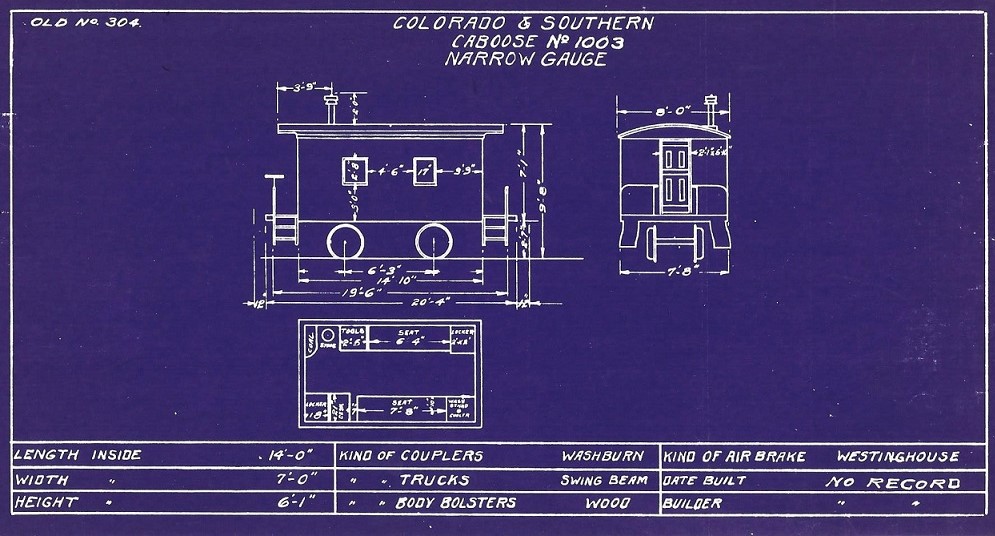 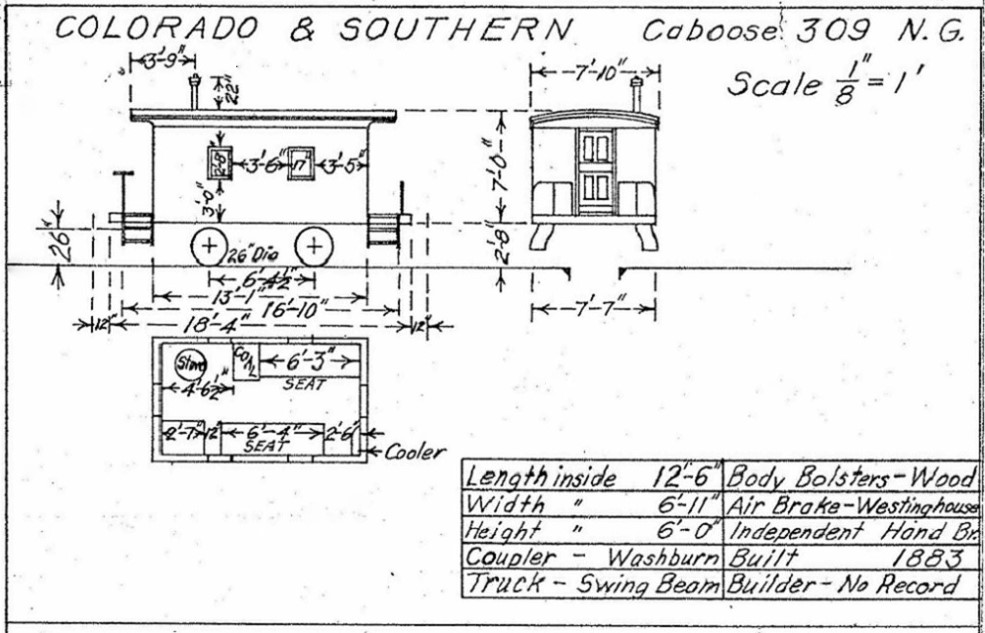  These three folio drawing are full of contradictions as well. Derrel Poole, in the "Eight Wheel Caboose . . ." thread, pointed out that the purpose of a folio drawing was to convey written information as to dimensions, weight, construction components, etc. The image was never to be taken as a detailed drawing. Sometimes the same image would be used for several similar but slightly different pieces of equipment. (This was particularly true of the early C&S locomotive folios, as all the wagon-top boilered 2-8-0 folios used the same image). If a car was modified in some way, the image would be retraced from an earlier folio, and the changes in dimensions would be inked in, either on the image or in the table below. The folio images for 304 and 309 look identical to me, other than the interior floor plan. I suspect that they were traced from the first image drawn for the first caboose folio: Since the title of this folio collection was "Folio 27", that implies that there were 26 prior editions. I see no way that the C&S, from its late 1898 creation to 1911, could have possibly issued 27 different freight car folio sets. I suspect that "Folio Number 1", was drawn up by UP draftsmen, probably in 1885, when the freight cars were all renumbered, to integrate all the subsidiary roads into the UP proper. This original folio set was updated periodically (annually?) by the UP, passed on to the DL&G and inherited and continued by the C&S. This may be complete B.S, but if "Folio No. 1" was drawn in 1885 and was re-issued annually (with updates of individual folio sheets as required) then 1885 + 26 new folio sets would take us to the year 1911, the same year that the caboose renumbering scheme was devised (cue Twilight Zone music). Is that why the folio sheets carry both the old and new numbers? Since there are Folio 27 drawings for both 309 and rebuilt 1007, the same car, does that mean that 1007 was rebuilt to the modern configuration in 1911? And since neither 304/1003 nor 308/1006 have been redrawn with the end cupola, does that mean that they have not yet been rebuilt in 1911? And what about the drawing of 308/1006. The image is clearly different from the other folio images, no mention of John's swing beam truck or wood bolster; and this image clearly has the wheels drawn to reflect a longer 9'-0" wheel base underframe. Suppose that the DL&G predecessor of 308 was a 1895 rebuild/new build and acquired the 9' wheel base underframe (like that of the 306 photo) in the process--did a draftsman create a new drawing for a folio sheet for the "Folio 11" issue to reflect a new and different car from the other cabooses? This early C&S caboose stuff can be maddening in all the uncertainties, but if this Forum can keep up the discussion, perhaps we can collectively develop a "Unified Theory of the C&S Caboose", one that incorporates and explains all the contradictions.
Jim Courtney
Poulsbo, WA |
Re: C&S caboose undercarriage yet again
|
Jim,
Regarding your statement: "Since the title of this folio collection was "Folio 27", that implies that there were 26 prior editions." The number 27 does not indicate there 26 prior editions it is book 27 in a series of folio books each on some type of equipment. I have seen the following type of folio books: #1- Car and crane journals #3 - Standard Springs #5 - Standard Axles #7 - Crank pins #8 - Piston Rods #22 - Steam #23 - Gilpin tram #24 - Passenger cars #26 - Brake details #27 - Cabooses #31 - Cylinder heads I have no idea what the missing numbers would be. Ken Martin |
Re: C&S caboose undercarriage yet again
|
This post was updated on .
Great information, Ken,
Thanks for correcting my misconception. Last week I acquired a copy of the "C&S Passenger Equipment Folio 24". The way it is titled made me think that it was the 24th volume of Passenger Car folios. But your point is that it identifies a particular set of folio drawings, within all the Car Department drawings. The locomotive diagrams that are in the "Files" section are not numbered, but just dated to 1903. Does anyone know the origin of the various folio drawings in folios 24 and 27? Were they done by the C&S at some point, all at once, or were they inherited with all the UP / DL&G records, then updated and revised? Since the 1909-1910 SUF freight cars are included in Freight Equipment Folio 27, that would suggest that either the folios were compiled about 1910-1911, or alternatively, they were much older and that new sheets for newly acquired cars were drawn and added to the volume. As to the caboose folio drawings, this still doesn't explain all the inconsistencies, the older car diagrams labeled with the new 1911 numbers, at a time that I would have thought most of the cabooses had been rebuilt. To me, that still suggests that older car diagrams were merely updated with dimension data, but not redrawn to show all the new changes of rebuilding. A case in point is the folio drawing of caboose 304/1003. It has a diagram of a not yet rebuilt caboose, with short wheel base underframe. But the length is recorded as 14'-10". Derrell Poole has stated that in The Colorado & Southern Ry Freight Equipment roster, issued April 1, 1903, all the cabooses had short bodies (average inside length 12'5"), except caboose 303/1002 which was two feet longer (the car we suspect rode on a pair of freight car trucks). So the dimensions of 304/1003 in the folio drawing must represent the rebuilding of the car to a long body, new car. Yet the underframe wheel base has not been redrawn/corrected to the modern 9' wheel base (as on 306/1005), nor has the image been corrected to show the end cupola, as in the drawing of 1007. Making sense of all this is like examining prehistoric pottery shards . . .
Jim Courtney
Poulsbo, WA |
Re: C&S caboose undercarriage yet again
|
This post was updated on .
In reply to this post by ComoDepot
Thanks for posting this photo, any and all showing early cabooses are desired. Unfortunately most are like this one, not much but a pool of shadow visible under the car. There was some kind of nasty discrimination going on. Every photographer wanted to take shots of the lordly locomotives, and the humble and faithful follower, the caboose, is usually somewhere way off the edge of the frame, or obscured and murky if seen at all. Shame on them photographers!!
I have contacted the Ronfor collection to see if a better print of the 313 Blackhawk photo might be obtainable. For now, that's our best hope, but everybody, please keep watching out for a new find! John
John Greenly
Lansing, NY |
Re: C&S caboose undercarriage yet again
|
This post was updated on .
In reply to this post by Jim Courtney
Hi Jim,
welcome aboard this train again, even if it is headed for the asylum! Let's throw a lump of coal in the stove and boil up a cup of coffee. No worries about having jumped off for a while, I did too, back there on a slow curve. Little did I expect that this C&S world, my favorite escape from real life, would get to be too much like work, where as a scientist I am often trying to extract reliable information from fragmentary and compromised data. There, I doubt everything, especially when I'm certain of it! I'm always on the lookout for contradictions or lapses in logic. That's hard work and stressful, and I sort of fled from this topic for a while because of that. Thank you for taking up the challenge of working toward a timeline. I have tried to avoid talking about dates, except to bring up questions, because I am very much less knowledgeable on the history than you and others here. But, here we go, in the spirit of careful inquiry I have a couple of comments and questions on your post. First let me try to lay out the basic issue as clearly as I can, trying to avoid all but established fact. We now have evidence, in the form of photos, not just the 313 photo, but also all the others of cars without cupolas that I have been able to measure, that a number of the waycars originally run on the DSP&P had at some time wheelbases much shorter than the 9 feet quoted in all modern references, drawings and models that I know of. We have confirmation of a 6' 4" or so wheelbase on two folio sheets that agrees with my 313 measurement. We have the famous photo of 306, ca. 1900-1901, with its center cupola, straight ladders, and the spidery, equalized, 9 foot wheelbase undercarriage, a type that was in common use on other roads including the D&RG and many standard gauge lines. These are, I believe, facts. We also have all those references, drawings and models of the early waycars with the equalized 9' undercarriage. Here's my first and most important question: where did these all come from? Are they really all the result of looking at the single, clear 306 photo and just assuming that all the cars were built with this undercarriage? At present I don't think I have seen any contemporary (original to the early period) source for this information, it's all modern stuff, from long after the cars were rebuilt. Is this right? Seems to me that this is the basic question we need to answer clearly. Please, everybody, help out on this one. My next question follows this line further. Jim, you said that some subset of the cars, including 306, were rebuilt between 1890 and 1898, with the equalized 9 foot undercarriage. I don't know the source of this information, would you please help me out on this? To follow this question a bit further, Jim, how do the folio 27 sheets tell us about pre-1908 cars as you suggest, if the sheets date from 1911? This can be true if they contain "fossils" of earlier configurations that were not updated properly. That seems entirely likely, given all the infuriating anomalies that you are doing a fine (and dizzying) job of exposing. It looks as if all we can do is view the folios as a faulty summary of the cars, haunted by ghosts from their past. However, I don't see, without other independent information, how we can infer an actual date for those anachronisms on the sheets except to say simply that they have been carried over from some time before 1911. Fact: we do know from the famous photo that 306 had its equalized undercarriage by 1900-1901. Jim, you must have other information to suggest an 1895 date for 308/1006 to have acquired its 9 foot undercarriage, rather than, say, 1905, or any other year before 1911. Also there is no way from the folio sheet itself to know whether the car in 1911 had the equalized version, or the modern version, of the 9 foot undercarriage. Is there a photo I've forgotten or not seen? Again, I'd be much obliged to know the other information that applies to this. If you've already said it earlier in this thread, I apologize profusely, I think I'm coming up against my aging memory limitations here! many thanks, John
John Greenly
Lansing, NY |
Re: C&S caboose undercarriage yet again
|
This post was updated on .
Welcome aboard this train again, even if it is headed for the asylum! Sure feels that way.
John, most of what is posted in my past two entries is heavy in speculation, short on facts. As I said, this is just my personal opinion of the C&S early caboose at this point in time. We also have all those references, drawings and models of the early waycars with the equalized 9' undercarriage. Here's my first and most important question: Where did these all come from? Are they really all the result of looking at the single, clear 306 photo and just assuming that all the cars were built with this undercarriage? At present I don't think I have seen any contemporary (original to the early period) source for this information, it's all modern stuff, from long after the cars were rebuilt . . . Is this right? Seems to me that this is the basic question we need to answer clearly. Yes, I believe so. The early C&S railfan draftsmen, when they set about to make drawings of the early DSP&P waycars, had a variety of clear photos of the waycar bodies and ends to measure and derive drawings. We've looked at all these photos on this thread: None have a clear view of the underframe. Then there was the photo of 306, a straight on, right angle photo with good underframe detail. This must have been the original underframe they thought, it looks similar to the D&RG 4-wheel underframes of the period. The wheelbase derived from the photo scaled out to about 9 feet, just like that on the modern, post 1908-12 rebuilt cars, so all seemed consistent. That has been the conventional wisdom since Mac Poor's famous book. The annoying photo of 313 at Blackhawk didn't fit the conventional wisdom. Since it had an odd, different underframe and an obvious air brake cylinder/reservoir attached, the notion that the original underframe required modification for fitting of air brakes was created, to explain the anomaly. I remember reading this explanation some 40 years ago. And so all of us lived contented lives, secure in our conventional wisdom that there were only two types of C&S caboose underframes, the original underframe like that of 306 and the modern underframe as on the surviving cabooses, both with a 9 foot wheel base. Then along comes John Greenly who thinks, "wow, the underframe of 313 looks awfully short". He then proceeds to apply scientific method, using a perspective algorithm, and comes up with a wheel base of only 6' 3-4". Kinda like Galileo pointing out the obvious, that the earth likely wasn't the center of the universe. Yours truly remembers a folio sheet, showing a short wheel base undercarriage under an un-rebuilt caboose, that he never understood. He posts it. Then we start looking at a lot of different photos. We begin to think, "Whoa, ya know, all of those early waycars do seem to have awfully short wheelbase underframes!" Conventional wisdom is shattered, chaos descends, I no longer know what to believe . . . I agree, the only factual information we have are two photos and three folio sheets (with inconsistencies / contradictions) of unknown date. There is also some historic documentation gathered by Derrell Poole, that I have teased out of Derrell's classic thread: http://c-sng-discussion-forum.41377.n7.nabble.com/Eight-wheel-Caboose-on-C-amp-Sng-td488.html Let's ignore the two C&S cabooses that came from the CC/UPD&G (I don't understand them enough to discuss them). Derrell makes a convincing case that of the 12 cabooses inherited by the C&S from the DL&G at the end of 1898, all were originally South Park built cars. His summary (details of his thinking in the thread): Summary: 1) Four DSP&P waycars go to Ogden and become U&N 1600 - 1604. 2) One car, 1601, returns to Denver for the UPD&G. 3) The car sees more service and use on the DL&G. 4) The Gulf passed "ownership" of 1601 to the DL&G (joining 11 surviving South Park waycars, a total of 12 cars passed on to the new C&S) There were no TRUE foreign (non Colorado) cabooses on the C&Sng. If you except this premise, that all the DL&G cabooses inherited by the new C&S were originally South Park cars, then rebuilding of a subset of the cars must have happened in the 1890s: 1. Caboose 306 arrived on the C&S with a center cupola and the spidery, equalized, 9 foot wheelbase undercarriage. The car must have been rebuilt sometime prior to arrival on the C&S. When? Late 1880s? 1890s? Where, Colorado? Or if this was former UN 1601, in Utah? 2. Derrell points out that "It is interesting to note that in a 1903 roster all of the former South Park cars were nearly identical in size - inside dimensions - (average 12'-5" length) except 303. (Three cars were listed without dimensions). 303 was at least 2 feet longer than any of the other cars. The dimensions are Pre - C&S rebuild (standard) of 1908." If 303 was one of the original South Park cars, how did it get stretched out in length by 2 feet and obtain a cupola to boot? It is hard to "rebuild" a caboose and end up with a car 2 feet longer. Under frame sills and longitudinal framing members don't stretch. This car was likely a new build in the 1890s, to replace a wrecked, vacated car, and assigned the same number. Derrell suggests that as a possibility. I believe this car rode on a pair of 20 ton swing beam trucks well into the 19teens. 3. Application of cupolas: Photos of way cars with center cupolas begin showing up in the 1890's as well as the early C&S years. Remember the un-cropped image by Dr Scott:  And some more:  Cropped photo from Todd Hackett collection, posted by Derrell Poole in "Eight Wheel Caboose . . ." thread. 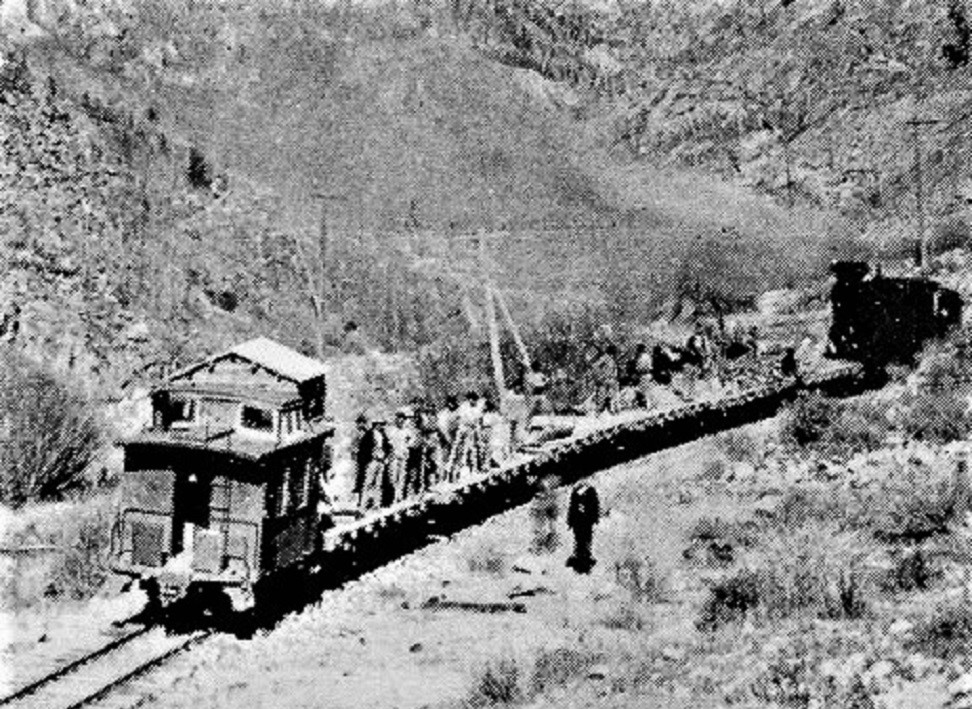 In Kindig et al, The Pictorial Supplement . . . 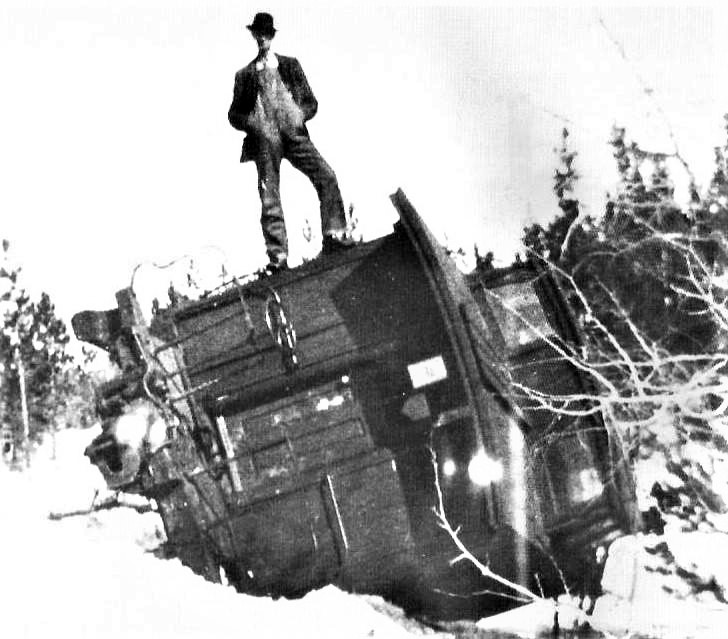 In Grandts Narrow Gauge Pictorial VIII And of course 306: 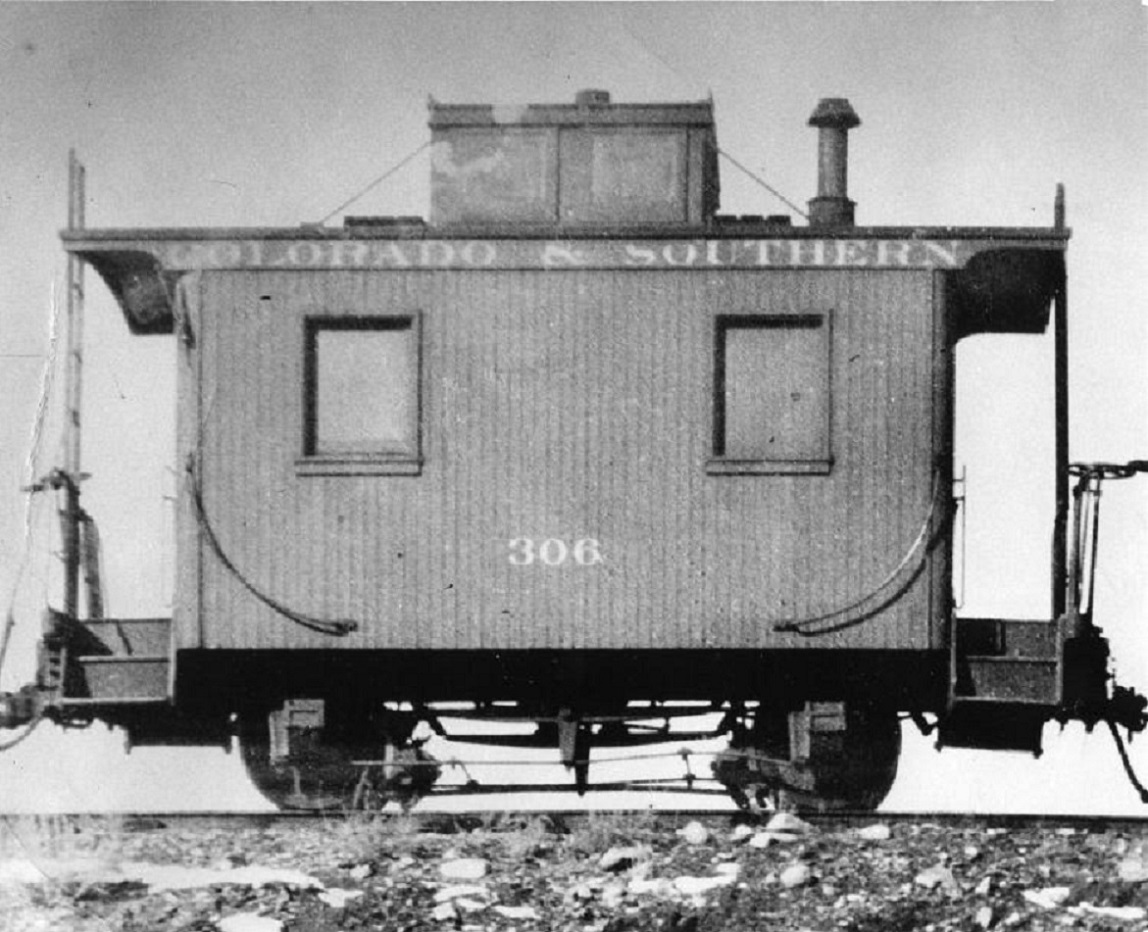 Derrell opined that the Utah & Northern 1601, the South Park car that went to Utah and then returned, may have had a center cupola added in Utah. Its return to the DL&G may have inspired the addition of cupolas to other cars. Records indicate that 303 (discussed above), 306 and 311 (wrecked in 2-1909) all had "lookouts". The Farmer brothers, in their Denver NNGC clinic, showed photos of the restoration of 310/1008, which clearly demonstrate the notches in the upper side framing members where a center cupola was once attached. So at least 4 cars had center cupolas added during rebuilding in the 1890s. It is not unreasonable to assume that the longer 9' wheel base undercarriage might have been applied to 310 and 311 as well. 4. Other evidence of rebuilding and shopping in the 1890s includes: The June 1898 DL&G Annual Report, per Derrell Poole, the first Annual Report for the South Park division after 1893. In this Report the railroad listed 12 cabooses - with Westinghouse Air Brakes. Two of them were also equipped with Selden Couplers. __________________________ I really don't know what to make of the caboose Folios. Remember, there was not a separate caboose folio drawing set, they were a part of C&S Freight Car Folio 27. The folio drawings are not dated. The caboose sheets show both old and new numbers, implying that they were at least up dated in 1911-1912. Folio 27 also includes sheets for the SUF boxcars and stock cars of 1909 and 1910. The folios were not static things, frozen in time at creation; they were amended over the years, some cars struck, others may have been added or amended. Derrell Poole opined that they were probably put together early in the C&S, say 1899-1901, explaining the drawings of un-rebuilt cabooses, with those short wheelbase underframes of yours. Those particular sheets could have been traced from even earlier UP or DL&G folio pages. If so, that would suggest that 308/1006 had a 9 foot underframe with a cupola-less body in its early years on the C&S. To me, this suggests it may well have had a 9' underframe like that of 306, and was part of a subset of rebuilt cars of the 1890s. Just my opinion, can't prove it. Could 308/1006 have acquired a new "modern" underframe later in the first decade, then have had its body rebuilt a couple of years later, thus explaining the folio drawing of a cupola-less caboose with a 9' wheel base? Yes, I guess its possible. But the plans for the modern underframe with cast journals/pedestals date to the 1908 caboose drawings: 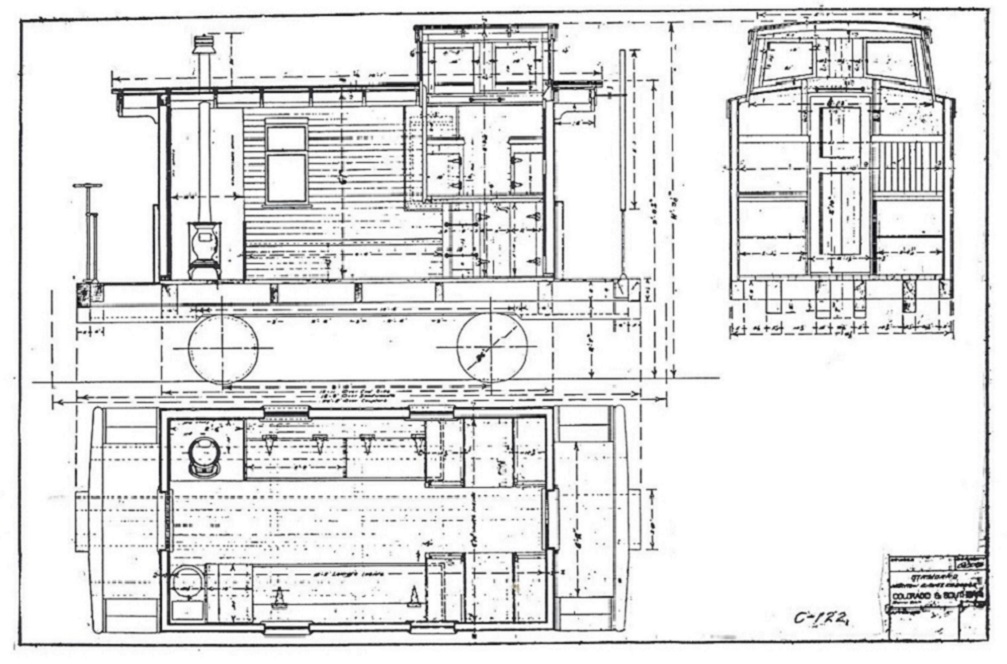 Derrel Poole quotes Hol Wagner as saying these plans were drawn for new narrow gauge caboose construction. No new cabooses were ever built, but the features of the drawings were used in the rebuilding program of 1908-1912. I find it hard to believe that caboose 308/1006 had a new underframe applied in 1908, then returned to the shops a year or two later to have rebuilding of the body. Just doesn't make sense to me. ______________ Anyways, these are my current beliefs, as I struggle to re-order my C&S caboose world: 1. You are correct, that all 20 of the waycars built by/for the DSP&P likely had underframes like that of 313, with a short wheel base of 6' 3-4". There are simply too many photos that suggest that. 2. I believe at least a few of these cars were rebuilt, along with 306, with the 9' wheelbase equalized underframe. I think the cars that acquired center cupolas in the 1890's were good candidates for that underframe; my interpretation of the folio drawing of 308/1006 suggest to me that it also received that hardware.
Jim Courtney
Poulsbo, WA |
«
Return to C&Sng Discussion Forum
|
1 view|%1 views
| Free forum by Nabble | Edit this page |

